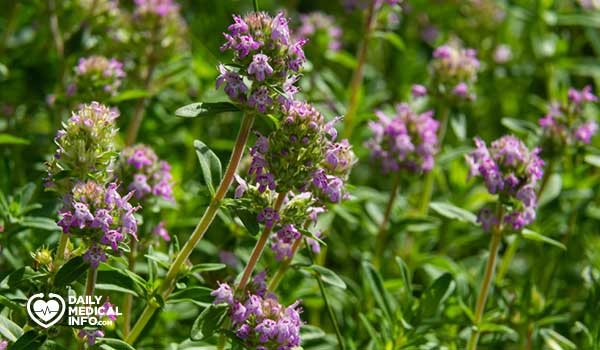Wild thyme: Potential health benefits and ways to use it
Have you ever heard of wild thyme? Is there a difference between it and the common and well-known thyme? Learn with us from the following article the most important information about wild thyme and its health benefits, how it differs from ordinary thyme, what it looks like, and other important information for you and your health.
What is wild thyme?
Wild thyme or Thymus serpyllum is an aromatic, creeping plant with elliptical leaves that appear in pairs along the stems and purple or pink flowers. It is considered one of the most famous types of thyme plants, and it grows mainly and its flowers bloom during the month of July until the month of August. It can grow on slopes, walls and rocky places.

What is the difference between wild thyme and regular thyme?
From a medicinal point of view, the available data indicate that wild thyme and thyme (commonly used) contain the same therapeutic properties, but may be in a lower percentage in the wild type, as both have antiseptic, anti-inflammatory, antibacterial and other properties. They may differ in the place of growth and uses.
And you can find out all the other information about common thyme from the article: Everything you need to know about thyme and its multiple benefits
Benefits of wild thyme
Potential health benefits of this plant include:
- Reducing a cough or sneezing.
- In cases of bronchitis and swelling.
- To treat kidney problems.
- To treat bladder disorders.
- improve blood circulation.
- Lowering cholesterol level.
- Stomach gas treatment.
- Colic treatment.
- Improve sleep.
- Strengthening and stimulating the immune system.
- Inflammatory treatment.
- Getting rid of skin germs.
- Arthritis treatment.
- Dealing with cases of eczema.
- Treating wounds and sprains.
- Treating the common cold.
- Indigestion treatment.
- Period pain treatment.
- Treatment of post-alcohol effects.
Important notice:
There is not much scientific evidence and data available that supports the health benefits of this type of thyme, and many of these benefits are due to personal experiences, so we strongly advise against using this plant without consulting a doctor first to weigh the benefits and harms and know what is best.
How to use wild thyme
Here are some ways in which this type of thyme can be used:
- The extract of this plant can be mixed with ginger and honey, and the mixture can be used to relieve coughing, coughing, and respiratory problems.
- The plant can be ground into a powder and added to medicinal or culinary mixtures.
- It can be applied to the skin (must be made into a paste first) to relieve skin infections.
- After converting the leaves into a paste, you can mix castor oil and use the mixture to relieve joint pain.
- Wild thyme tea can be made, and it can be drunk on its own or mixed with other plants such as rosemary.
- The leaves of this plant can be used at any time or the flowers can be used as they grow.
- The seeds of this plant can be used as an anthelmintic.
It should be noted that the appropriate dose of this type of thyme that must be used depends on several factors such as the age of the person and his health condition, and there is no documented evidence about the exact dose, and it must be noted that if any products containing this type of thyme are used among the ingredients, it must be Follow the attached instructions in detail to avoid any possible side effects, and it is preferable to consult a specialist on how to use this plant and its appropriate quantity.
Wild thyme damage
This thyme is usually safe when used in appropriate quantities, whether in cooking or for medicinal purposes, but this plant can reduce the activity of the thyroid gland, as it affects the hormones that control the gland, so you must speak with a specialist doctor first before using this plant in case of infection Any disorders of the gland.
In the case of pregnancy or breastfeeding, it is recommended to consult a doctor first and obtain his approval to use this plant during these stages, as there are no studies indicating the relationship between this plant and pregnancy and lactation.

